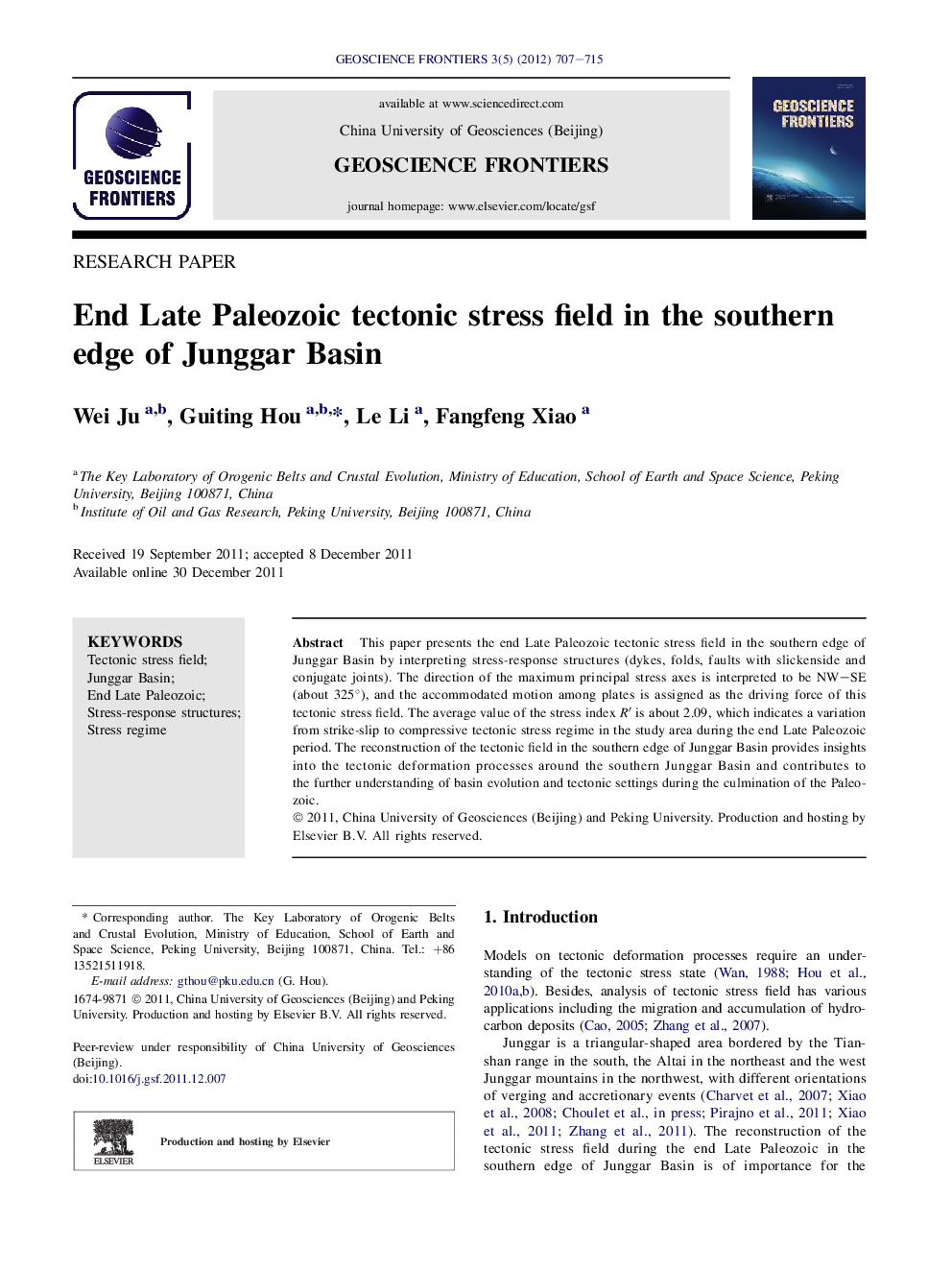| Article ID | Journal | Published Year | Pages | File Type |
|---|---|---|---|---|
| 4681841 | Geoscience Frontiers | 2012 | 9 Pages |
This paper presents the end Late Paleozoic tectonic stress field in the southern edge of Junggar Basin by interpreting stress-response structures (dykes, folds, faults with slickenside and conjugate joints). The direction of the maximum principal stress axes is interpreted to be NW–SE (about 325°), and the accommodated motion among plates is assigned as the driving force of this tectonic stress field. The average value of the stress index R′ is about 2.09, which indicates a variation from strike-slip to compressive tectonic stress regime in the study area during the end Late Paleozoic period. The reconstruction of the tectonic field in the southern edge of Junggar Basin provides insights into the tectonic deformation processes around the southern Junggar Basin and contributes to the further understanding of basin evolution and tectonic settings during the culmination of the Paleozoic.
Graphical abstractFigure optionsDownload full-size imageDownload as PowerPoint slideHighlights► The direction of the maximum principal stress axes is interpreted to be NW–SE. ► The stress regime is a variation from strike-slip to compressive. ► The accommodated motion among plates may be the cause of this stress field.
